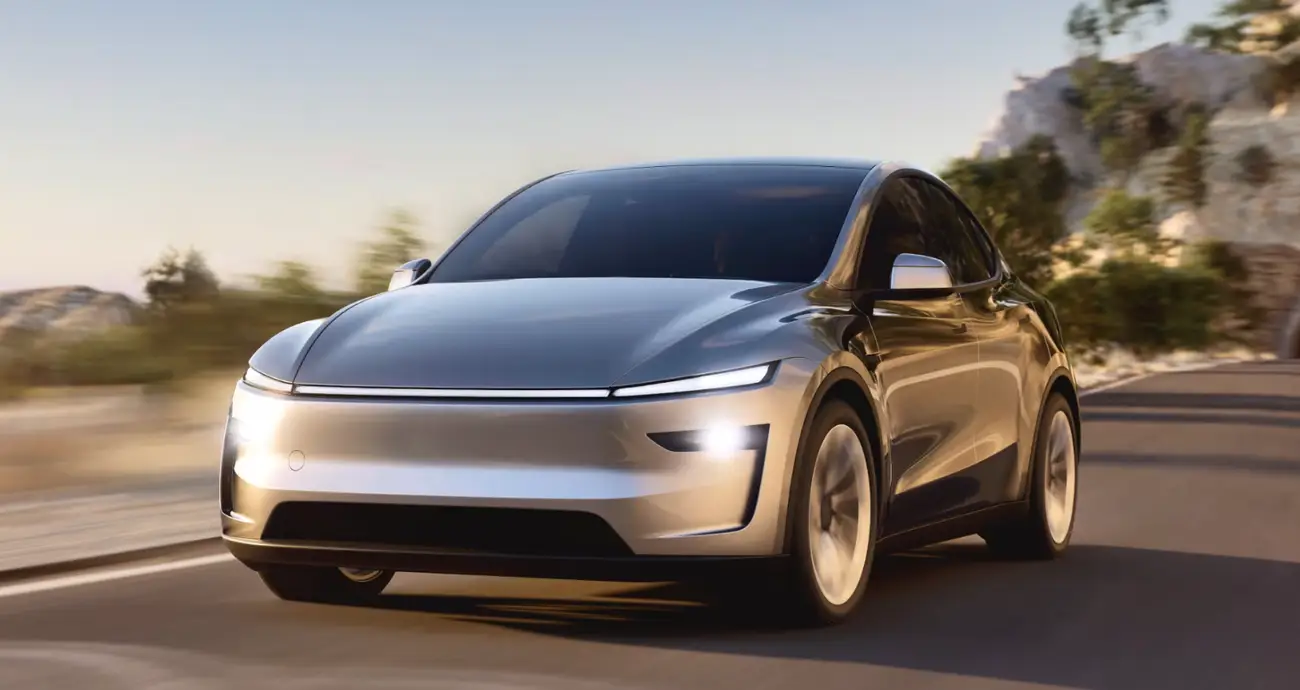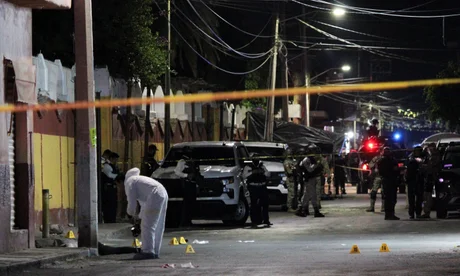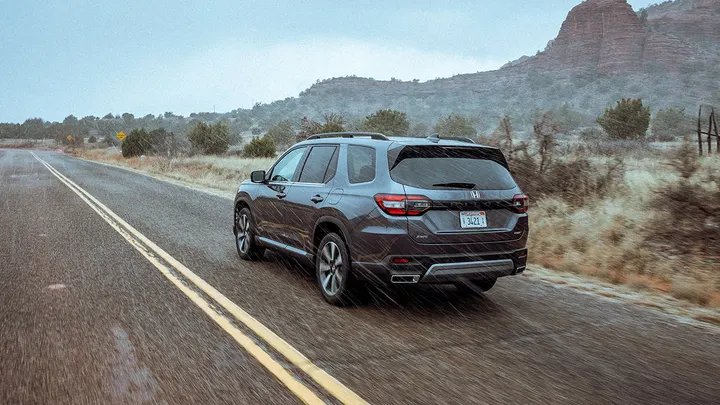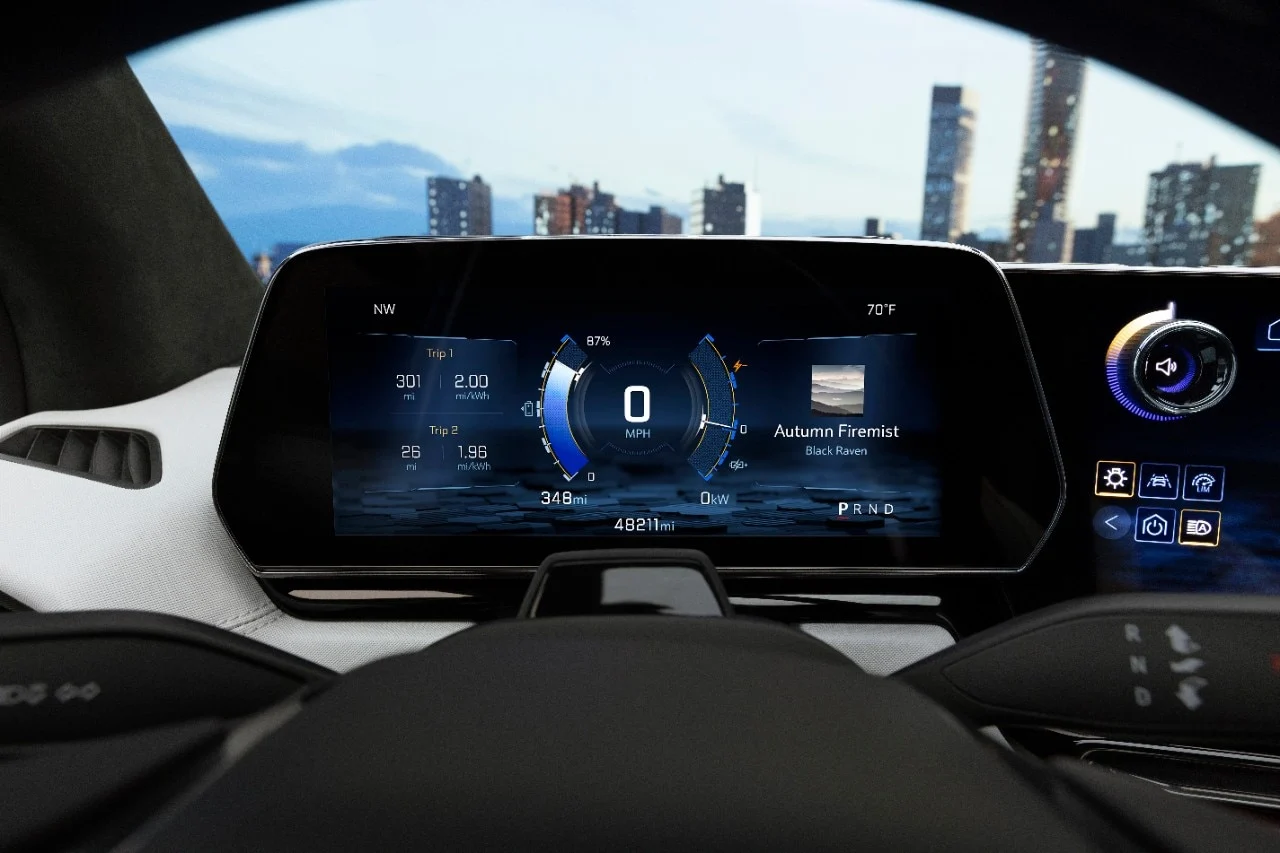Tesla’s long-teased diner in Los Angeles has finally opened, merging retro-futuristic aesthetics with the company’s Supercharger stations. While the concept generated enormous buzz and drew crowds with its bold design and immersive tech, customer experiences have revealed serious operational flaws. From long wait times and touchscreen ordering chaos to overpriced diner fare and poor service, the execution fails to meet Musk’s lofty ambitions. Critics have drawn parallels to other undercooked Tesla ventures like the Cybertruck, arguing that spectacle is prioritized over substance. Local backlash, political protests, and logistical shortcomings further complicate Tesla’s efforts to expand the concept globally. The diner ultimately illustrates the tension between Elon Musk’s visionary branding and the practical needs of real-world customers.
#TeslaDiner #ElonMusk #TeslaNews #FuturisticDining #CybertruckVibes #RetroFuturism #LADining #TeslaExperience #SuperchargerCafe #TechAndFood #DisruptiveInnovation #TeslaBranding
The Tesla Diner: Between Retro-Futuristic Utopia and Elon Musk’s Disappointing Reality
The intersection of technology, dining, and spectacle has reached a new pinnacle with the opening of Tesla’s first diner in Los Angeles. What began as an ambitious vision from Elon Musk has materialized into a complex reality that embodies both the promise and the pitfalls of his approach to business innovation. The Tesla Diner represents more than just another restaurant—it’s a physical manifestation of Musk’s broader vision for integrating Tesla’s brand into every aspect of modern life.
This venture into the hospitality industry reflects Tesla’s evolution from a car manufacturer into a lifestyle brand that seeks to dominate multiple sectors of the consumer experience. However, the gap between conceptual ambition and operational execution has created a fascinating case study in how visionary ideas translate into real-world customer experiences.
The diner’s opening has sparked intense debate about whether this represents innovation or merely expensive theatrics, raising questions about the sustainability of concept-driven businesses that prioritize spectacle over fundamental service quality.
The Original Vision and Ambitious Design
Elon Musk’s Idea and Its Los Angeles Materialization
The Tesla Diner concept first emerged in 2018 when Elon Musk teased the idea through his characteristic social media channels, promising a unique dining experience that would revolutionize how people think about charging stations and casual dining. This early announcement generated significant excitement among Tesla enthusiasts and futurists who anticipated another groundbreaking innovation from the company.
The “retro-futuristic” design philosophy draws heavy inspiration from the controversial Cybertruck aesthetic, creating a cohesive visual language that extends Tesla’s brand identity into the hospitality sector. This design approach prioritizes bold geometric forms, metallic surfaces, and minimalist details that immediately identify the space as a Tesla property.
The Los Angeles location serves as a proof-of-concept for Musk’s broader vision of integrating Tesla charging infrastructure with entertainment and dining experiences. The choice of Hollywood as the inaugural location reflects Tesla’s understanding of the importance of media attention and celebrity culture in building brand awareness and cultural relevance.
The materialization of this concept required significant investment in both technology and real estate, demonstrating Tesla’s commitment to expanding beyond traditional automotive boundaries into lifestyle and entertainment sectors that could provide additional revenue streams and brand strengthening opportunities.
Architectural and Technological Features of the Site
The two-story structure incorporates 80 Supercharger stations, creating one of the largest charging facilities in Tesla’s network while attempting to transform the typically mundane experience of vehicle charging into an entertainment destination. This integration represents a sophisticated approach to maximizing land use efficiency while addressing customer needs.
The installation of massive 66-foot mega-screens dominates the visual landscape, displaying a mixture of films and Tesla advertising content designed to entertain customers during charging sessions. These screens represent a significant technological investment while creating an immersive branded environment that reinforces Tesla’s identity throughout the customer experience.
The promised integration of Optimus robots generated significant advance publicity, though the reality has fallen short of expectations with static displays rather than functional robotic service. This disconnect between promise and delivery has become a recurring theme in customer reactions to the facility.
The architectural design prioritizes visual impact and brand messaging over traditional restaurant functionality, creating a space that serves as much as a marketing vehicle as a dining establishment. This approach reflects Musk’s philosophy of creating “statement” projects that generate media attention and cultural conversation.
The Customer Experience: Between Hype and Frustration
Initial Enthusiasm and Long Wait Times
The opening weeks saw crowds wrapping “around the block,” with customers willing to wait hours for the opportunity to experience Tesla’s interpretation of the American diner. This initial enthusiasm demonstrated the powerful pull of the Tesla brand and the public’s curiosity about innovative dining concepts.
The attraction proved particularly strong among Tesla owners and technology enthusiasts who viewed the diner as a pilgrimage destination that combined their automotive passion with a unique cultural experience. This core audience helped generate initial buzz and social media content that amplified the diner’s visibility.
Tourist interest has remained high due to the facility’s location in Hollywood and its status as a unique attraction that combines technology, dining, and spectacle in ways not available elsewhere. The diner has become a destination for visitors seeking Instagram-worthy experiences and technology demonstrations.
However, the sustained high demand has created operational challenges that the facility appears unprepared to handle efficiently, leading to customer frustration that contrasts sharply with the initial excitement and anticipation.
Service and Atmosphere: A Disorganized “Diner”
The ordering process relies entirely on touchscreen interfaces, eliminating traditional server interactions in favor of technology-driven efficiency. While this approach aligns with Tesla’s technology-first philosophy, it has created confusion and frustration among customers unfamiliar with the system or preferring human interaction.
The atmosphere has been consistently described as loud, chaotic, and overwhelming, with staff appearing understaffed and unprepared for the volume of customers and complexity of operations. This operational dysfunction contrasts sharply with the sleek technological promises that attracted customers initially.
The minimalist decor, while visually striking and Instagram-friendly, has created accessibility challenges with elevator-versus-stair navigation issues that affect customers with mobility limitations. These design oversights suggest that aesthetic considerations took precedence over practical usability concerns.
Basic amenities like restroom facilities have proven inadequate for the customer volume, creating additional frustration that undermines the overall experience. These fundamental service failures highlight the gap between conceptual vision and operational reality.
The Culinary Offering: A Mixed to Disappointing Verdict
The menu features classic American diner fare including burgers and milkshakes, representing a safe but uninspired approach to food service that fails to match the innovative ambitions evident in other aspects of the facility. This conventional menu choice suggests uncertainty about how to integrate culinary innovation with the broader Tesla brand experience.
Customer reviews have highlighted numerous quality issues, including incomplete burger preparation and overpriced items like expensive bacon that fail to justify premium pricing through superior quality or unique preparation. These quality control problems suggest systemic issues in kitchen operations and management.
Despite the presence of a renowned chef, operational challenges in the kitchen have prevented the realization of the culinary potential that might justify the premium pricing and extended wait times. This disconnect between culinary talent and execution capabilities reflects broader organizational challenges.
The food quality issues have become a significant source of customer disappointment, as poor dining experiences undermine the positive impressions created by the technological spectacle and unique atmosphere of the facility.
Controversies and Public Reception
The “Tesla Takedown” Movement and Demonstrations
Anti-Musk sentiment has manifested in organized protests targeting the diner, driven by broader opposition to Musk’s political positions, including his involvement with DOGE (Department of Government Efficiency) and various social media controversies. These demonstrations reflect how Musk’s personal brand has become inseparable from Tesla’s corporate identity.
The protests have created negative publicity that extends beyond typical restaurant criticism to encompass broader political and social issues. This politicization of the dining experience demonstrates how polarizing figures can affect all aspects of their business ventures.
The demonstrations have impacted the brand image by associating the Tesla Diner with political controversy rather than technological innovation. This shift in narrative threatens to overshadow the facility’s intended message of progress and innovation.
The protests highlight the risks of building business ventures around controversial personalities, as political opposition can translate directly into economic impacts through boycotts and negative publicity campaigns.
Environmental and Urban Criticisms
Local residents have complained about noise and visual pollution created by the massive screens and crowds, raising questions about the facility’s integration into the existing neighborhood fabric. These concerns reflect broader issues about corporate responsibility and community impact.
The diner’s insertion into the Hollywood landscape has created tensions with established businesses and residents who view it as an intrusive commercial venture that prioritizes spectacle over community harmony. This opposition demonstrates the challenges of implementing disruptive concepts in established urban environments.
Environmental critics have questioned whether the facility’s energy consumption and urban footprint align with Tesla’s stated environmental mission, creating apparent contradictions between brand messaging and operational reality.
The urban planning implications of the project have raised broader questions about how technology companies should integrate their facilities into existing communities while respecting local character and resident concerns.
Parallels with the Cybertruck: An Undercooked Product?
Critics have drawn comparisons between the Tesla Diner and the Cybertruck launch, suggesting both represent products that prioritize making a “statement” over delivering functional excellence. This pattern has become a recurring concern about Tesla’s approach to product development and market introduction.
The emphasis on visual impact and media attention over operational functionality reflects a broader Tesla philosophy that may not translate effectively to the hospitality industry, where customer service and product quality are paramount concerns.
Skepticism about the viability of expanding the diner concept into a chain reflects doubts about whether the current operational model can be refined and scaled successfully. The challenges evident in the first location suggest significant work needed before expansion should be considered.
The comparison highlights concerns that Tesla may be spreading its focus too broadly across multiple industries without achieving excellence in any single area, potentially diluting the brand’s effectiveness and market position.
Future Perspectives and Reflections
Tesla’s Global Expansion Ambitions
Tesla has announced plans to open additional diner locations in other “major cities around the world,” suggesting confidence that operational issues can be resolved and the concept can be successfully scaled internationally. This expansion strategy represents a significant commitment to the hospitality sector.
The global expansion plans require significant capital investment and operational expertise that extends far beyond Tesla’s core automotive competencies. Success will depend on the company’s ability to develop scalable systems and management practices that can ensure consistent quality across multiple locations.
International expansion will face additional challenges related to local regulations, cultural preferences, and competitive landscapes that may not align with the American diner concept. These factors could require significant adaptation of the Tesla Diner model.
The ambitious expansion timeline suggests confidence that current operational problems are temporary growing pains rather than fundamental flaws in the concept, though evidence supporting this optimism remains limited.
The Challenge of Sustainability and Reality Gap
The risk that novelty will fade represents a significant threat to the diner’s long-term viability, as initial curiosity-driven traffic may not translate into sustainable repeat business if fundamental service issues remain unresolved. This transition from novelty to routine operation will test the concept’s true commercial viability.
Musk’s vision has been criticized as being “out of touch with human needs,” suggesting that the focus on technological spectacle may have obscured understanding of basic customer expectations for dining experiences. This disconnect could limit the concept’s appeal to mainstream audiences.
Tesla’s broader financial performance provides important context for evaluating the diner project, as the company faces pressure to demonstrate profitability across all business segments. The diner’s success or failure will be measured not just in customer satisfaction but in financial contribution to overall corporate performance.
The sustainability challenge extends beyond financial considerations to encompass operational efficiency, environmental impact, and community integration—all areas where the current Los Angeles location faces significant challenges.
The Tesla Diner represents a fascinating experiment in brand extension and technological integration, but its ultimate success will depend on Tesla’s ability to resolve the fundamental tension between visionary ambition and practical execution. The gap between promise and delivery evident in the current operation suggests that significant improvements will be necessary before the concept can achieve its stated goals of revolutionizing the intersection of dining, charging, and entertainment.
The project serves as a reminder that successful innovation requires not just bold vision and technological capability, but also deep understanding of customer needs, operational excellence, and community integration. Whether Tesla can bridge these gaps will determine whether the diner becomes a sustainable part of the company’s diversification strategy or remains an expensive experiment in corporate brand extension.




